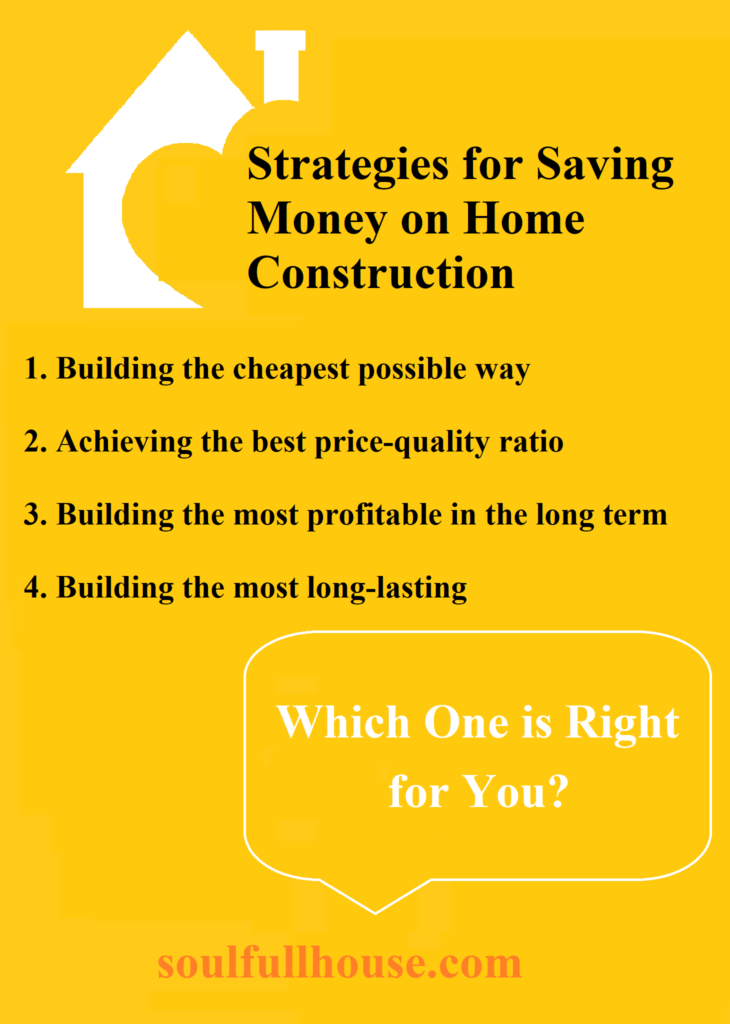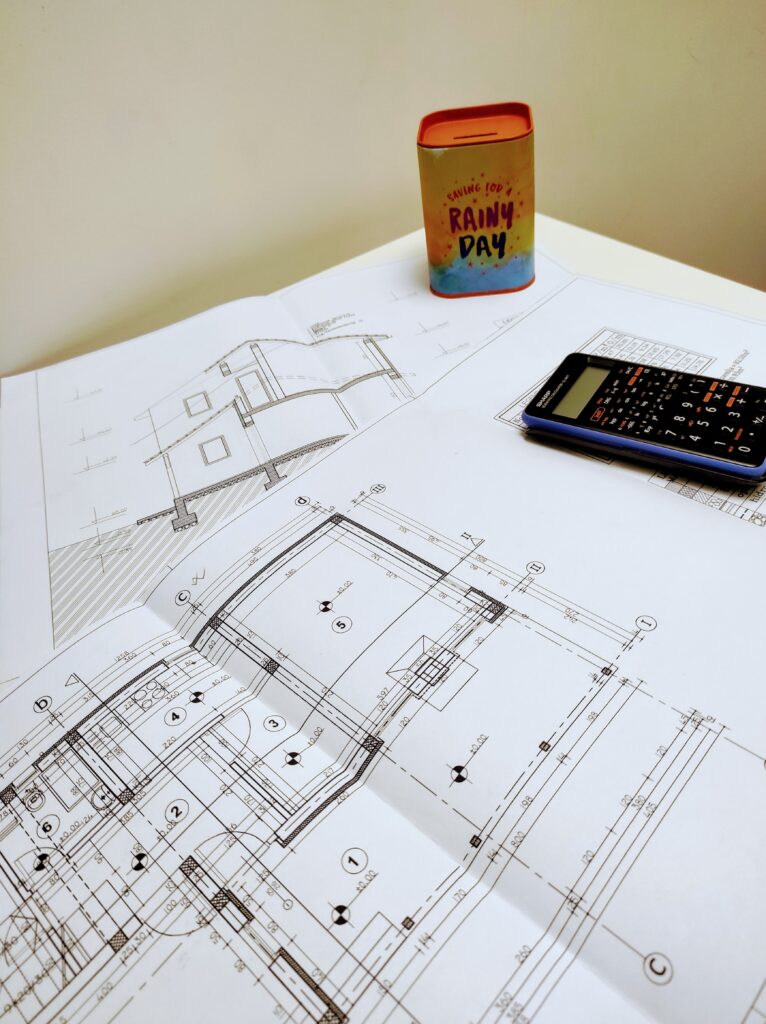Consider the following scenarios. Two identical houses were built on the same street, one next to the other; one was 10% less expensive to build, but the other was estimated to be 15% more valuable for resale. Two more identical-sized houses were built opposite them; one is super-efficient, with maintenance costs and energy consumption 90% lower than the others; the other, while 30% more expensive than the average, is made of such materials and construction techniques that ensure it will last for hundreds of years. The question is, who saved the most money among the owners?

The bottom line is this, when considering ways we can save money during construction, we first need to understand what are the different strategies we can use? Alternatively, what is the ultimate goal that we hope to achieve through savings? We have written extensively on our site about techniques (methods) to save money when buying materials, hiring contractors, budgeting, and planning construction projects, and we will continue to do so. And yet, the primary purpose of this article is to help you understand the distinction between a strategy and a method (technique) of saving.
What are the strategies for finding cost effective home construction solutions?
There are four different strategies you can use to save money when building a home, and they are:
1. Building the cheapest possible way
2. Achieving the best price-quality ratio
3. Building the most profitable in the long term
4. Building the most long-lasting
It is not necessary to choose and stick to one of these strategies when building your house because they are not mutually exclusive, but it is important to find the optimum balance that will bring you to the desired outcome – a soulful house.

1. Building the cheapest possible way
Building in the cheapest possible way is the ultimate and obvious way to save money, yet not suitable for everyone. If you have a very limited budget but yet want to own a home, you will hunt for ways to save on every conceivable item. There are also structural elements that have no aesthetic, energy, or functional value and merely serve a functional purpose, in which case it is logical to pay the least money.
Constructing with the cheapest materials possible can be very advantageous when working on a tight budget, but it does not have to mean sacrificing quality. Lower-cost materials are frequently more durable and of greater quality than more-priced alternatives. Furthermore, if you use recycled materials, you can typically get the same quality for a fraction of the price.
Constructing in the most cost-effective manner can help ensure that the project is carried out professionally. Using lower-cost materials and cutting corners, on one hand, you must compensate, on the other, by ensuring that the job is done to the highest standards. This strategy can save you time as well and speed up the building process. Constructing in the most cost-effective manner means adaptability. You must be more adaptable to changes in design or materials when employing lower-cost materials, which can help guarantee that the end product fits your needs.
2 Achieving the best price-quality ratio
The next strategy, and undoubtedly the most common and recommended, is to achieve the best price-quality ratio. This is because you want to make certain that you are receiving the most bang for your buck. Getting the best price-quality ratio means getting high-quality materials and services at the most affordable price. Remember that the best price-quality ratio does not imply that you are receiving the cheapest option available. This strategy is particularly recommended for individuals who do not expect to dwell in their home for the rest of their lives and instead intend to sell it at some point.

3 Building the most profitable in the long term
Building a house for profit in the long-term is a great way to maximize your return on investment. The main reasons why it is such a popular option is because constructing a house does not end the investment, it needs to be heated, cooled, maintained, renovated… and minimizing these costs actually reduces the total investment in the living space. By investing in quality and energy-efficient materials and smart design, the house will not only be more attractive to potential buyers, which could lead to a higher selling price, but also reduce the costs associated with repairs and maintenance over the life of the house, resulting in a more profitable long-term return.
Building a house for long-term profit also means taking into account the current and future trends in the housing market, and also considering the costs of financing. Financing a house is a complex process and it important to understand the different loan options and their associated costs. A builder should ensure that the most cost-effective loan is selected for the project.
4 Building the most long-lasting
This strategy implies thinking about future generations. The benefits that are achieved in this way are actually the benefits of your heirs. By building in a way that implies the selection of the most durable materials, proven construction techniques and timeless design. Building a long-lasting house is a smart investment for any homeowner or builder if one can afford it. It can also be a great source of pride for the homeowner or builder.
Finally, it is important to choose the right location for the home. The home should be built in an area that is not prone to flooding or other natural disasters. Additionally, a good location today is actually a prime location tomorrow.
After three built houses of my own, of all the listed strategies, I would always opt for the best price-quality ratio. It is important to understand that these strategies are not completely mutually exclusive, but we are only talking about the dominant one.
In conclusion, when it comes to saving money during construction, there are different strategies that can be applied. Building the cheapest way is an option for those with limited budgets, but it is important to maintain quality and professionalism. Achieving the best price-quality ratio is the most common and recommended strategy, as it provides high-quality materials and services at an affordable price. Building for long-term profitability requires investing in quality, energy-efficient materials and smart design, which can lead to a more profitable long-term return. Building the most long-lasting house is a smart investment that benefits future generations and can be a source of pride for the homeowner or builder. It is important to choose the right location and take into account the different costs associated with financing. Ultimately, finding the optimum balance that brings about a soulful house is key.
